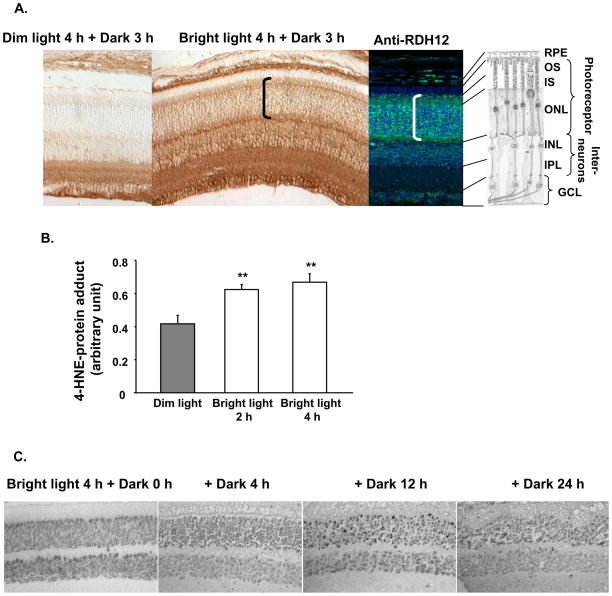Figure 5.
Exposure of Balb/C mice to bright light induces adduct formation in the retina followed by photoreceptor apoptosis. Mice were raised in dim (10 lux) cyclic light until 8 to 12 weeks-old. They were then subjected to bright light (3,000 lux) exposure for indicated times, and transferred to the dark for indicated times. A, Immunohistochemistry of retinal paraffin sections using anti-HNE coupled with biotin at 1:100 dilution (brown signal), and anti-RDH12 at 1:200 dilution (green signal). Pictures were taken at 20 × magnification. RPE, retinal pigmented epithelium; OS, outer segment; IS, inner segment; ONL, outer nuclear layer; INL, inner nuclear layer; IPL, inner plexiform layer; GCL, ganglion cell layer. Note the co-localization of adducts and RDH12 in photoreceptors indicated by brackets. B, Immediately after exposure to bright light, mice were killed and retinas were dissected. Whole retinal homogenates were prepared and equal aliquots (10 μg) of retinal homogenates were analyzed by dot blot using anti-HNE coupled with HRP to quantify total 4-HNE-protein adducts. Six mice were used in each group, and the mean and SEM are plotted. C, TUNEL nuclear staining was observed in the ONL at 4 h of exposure to bright light followed by at least 12 h in the dark. Pictures were taken at 40 × magnification.

